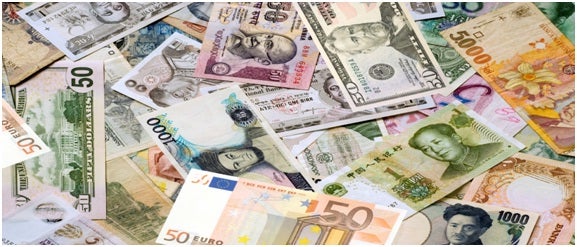
Currencies across the Asia-Pacific region have suffered a hard blow from the coronavirus as the epidemic continues to clobber the Chinese economy, disrupting supply chains.
The impact of the coronavirus has spread outside China to economies heavily reliant on the Asian giant, from Australia and Thailand to South Korea and Singapore.
Currencies in the region have taken a tumble from disrupted supply chains and weakened Chinese tourism.
It seems a long way from the end of last year, when currencies in Asia-Pacific were lifted by hopes of a breakthrough in the US-China trade tensions. The coronavirus epidemic has now wiped out the gains.
The Australian dollar, which rallied 4% in December, plummeted last week to its lowest point in nearly a decade.
Currencies in both Singapore and Thailand have also plunged since monetary authorities in those countries alerted of the economic impact of the coronavirus outbreak.
Thailand cut interest rates to a record low. Singapore reassured the market that its currency had sufficient room to ease within its set limits.
From a trade war to an epidemic
The region has moved from the epicentre of a trade war to that of an epidemic. Hopes of the economies stabilizing after the US and China signed a trade war truce in December are fading. Now, markets are pointing to sharply slower growth.
Australia has the worst performing major currency in the region, despite the central bank playing down the virus’s impact. “It’s been a pretty poor run”, said Daniel Been, head of forex strategy at ANZ, another Melbourne-based lender.
The currency has sunk 4.3 per cent against its US counterpart in 2020.
In December, Thailand’s central bank cut its 2020 GDP growth forecast for south-east Asia’s second-largest economy from 3.3 per cent to 2.8 per cent. The Thai baht is one of the worst-performing currencies in the region this year, down 3 per cent against the US dollar.
The Singapore dollar was down 0.6 per cent against the US dollar by last Wednesday afternoon in London. It is the third worst-performing currency in Asia this year, down 2.3 per cent.
The virus outbreak and travel restrictions continue to hurt tourism and retail in the region. That disruption to China’s supply chain is expected to have knock-on effects for manufacturing in a region heavily reliant on that sector.







